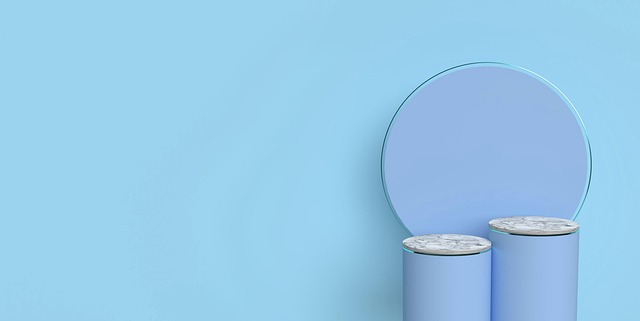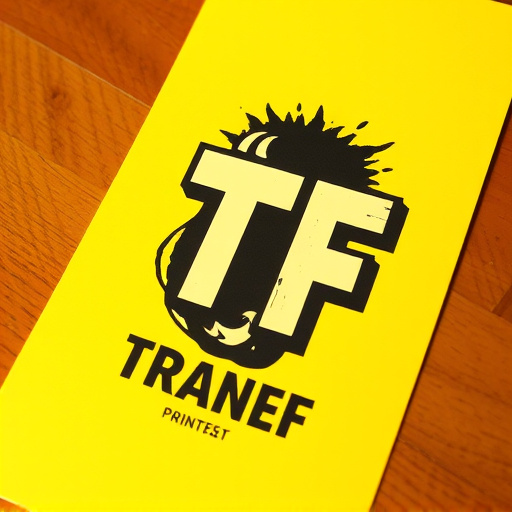Direct-to-Fabric (DTF) printing is a game-changer in apparel customization, offering vibrant, durable prints on various fabrics. This method, involving heat and pressure, allows for intricate designs that resist fading. Proper preparation of garments and careful washing techniques are crucial for achieving high-quality DTF prints. The process involves aligning transfer film, heating it, and peeling away the backing, resulting in stunning artwork integrated into the fabric. With specific care, including hand-washing and air-drying, DTF prints can last for years, preserving their vibrancy and detail.
“Unleash your creativity with the art of DTF (Direct-to-Film) transfers on garments—a unique printing technique that combines precision and style. This guide explores the benefits of DTF for adding personalized designs to your wardrobe. From understanding the process to mastering care instructions, we’ll navigate you through every step. Learn how to prepare your garment, apply transfers, and preserve the vibrant DTF prints while avoiding common pitfalls in cleaning. Discover the secrets to keeping your DTF garments looking fresh and ensuring their longevity.”
- Understanding DTF Transfers: A Unique Printing Technique
- The Benefits of DTF Printing for Garments
- Preparing Your Garment for DTF Transfer Application
- Step-by-Step Guide to Applying a DTF Transfer
- Caring for DTF Prints: Preserving the Design
- Common Mistakes to Avoid When Cleaning DTF Garments
Understanding DTF Transfers: A Unique Printing Technique

DTF Transfers, or Direct-to-Film Transfers, are a cutting-edge printing technique that has revolutionised the fashion industry. Unlike traditional printing methods, DTF involves transferring intricate designs and patterns directly onto fabric using a digital film. This process allows for an unparalleled level of detail and vibrancy in prints, making it a favourite among designers looking to create unique, eye-catching garments.
The beauty of DTF Printing lies in its versatility. It can be applied to various fabrics, from cotton tees to silk dresses, offering endless possibilities for creative expression. This technique not only enhances the visual appeal of clothes but also ensures that the designs remain indelible after multiple washes, making DTF Prints a durable and long-lasting option for both consumers and fashion brands.
The Benefits of DTF Printing for Garments

Direct-to-fabric (DTF) printing is a game-changer when it comes to creating unique and durable garments with film transfers. This innovative technique allows for high-quality, long-lasting prints that truly bring designs to life. Unlike traditional screen printing methods, DTF offers several advantages that make it a popular choice for custom apparel.
With DTF Printing, the design is directly applied to the fabric using heat and pressure, resulting in vibrant and precise DTf prints. This process ensures that the print becomes an integral part of the garment, making it resistant to fading, cracking, or peeling over time. It’s perfect for creating custom t-shirts, hoodies, and accessories with intricate film transfer designs, enabling businesses and individuals to offer their customers a premium product with a unique, personalized touch.
Preparing Your Garment for DTF Transfer Application

Before applying a DTF (Direct to Fabric) transfer, ensure your garment is clean and in good condition. Start by gently washing it with mild detergent and cold water to remove any dirt or oils that might interfere with the printing process. Avoid using fabric softeners or dryer sheets as they can leave a residue that could impact the final DTF print quality.
Once cleaned, allow the garment to air dry completely. Check for any damage or weak areas in the fabric, such as tears or stretched out spots. If needed, perform minor repairs to ensure the garment is sturdy enough to withstand the DTF transfer application process and subsequent wear. This preparation step is crucial for achieving crisp, long-lasting DTF prints on your garments.
Step-by-Step Guide to Applying a DTF Transfer

Applying a Direct-to-Film (DTF) transfer is an art that can transform ordinary garments into unique pieces with eye-catching designs. Here’s a step-by-step guide to help you master this technique, ensuring your DTF prints are precise and long-lasting.
Begin by preparing your workspace with the necessary tools: a clean, flat surface; your chosen garment; high-quality DTF transfer film; a heat press or iron; and a design printed on transparent paper or a digital file ready for transfer. Place the garment upside down on your work area. Position the DTF film over the desired design, aligning it precisely with the garment’s fabric. Ensure no air bubbles are trapped between the film and the fabric. Heat the film gently using a heat press or iron, following the manufacturer’s guidelines for temperature and pressure. The heat will activate the adhesive on the back of the film, fusing it permanently to the garment. Once cooled, carefully peel away the backing to reveal your stunning DTF print.
Caring for DTF Prints: Preserving the Design

Caring for DTF Prints: Preserving the Design
When it comes to preserving your DTF (Direct-to-Film) transfers, proper care is essential to maintain the vibrancy and integrity of the design. Since DTF prints are directly applied to the fabric using heat and pressure, they offer a unique and durable finish. However, this also means that certain care instructions must be followed to prevent damage or fading. It’s crucial to treat these garments with care to ensure the artwork remains intact for years to come.
Avoid machine washing your DTF garments as it can cause the design to peel or blur. Instead, opt for hand-washing in cold water using a mild detergent. Always turn the garment inside out before washing to protect the print from direct contact with other fabrics. Air drying is recommended to prevent any potential shrinkage or color fading that might occur in high-temperature settings. With these simple precautions, you can help extend the lifespan of your DTF prints and keep them looking as vibrant and detailed as the day they were created.
Common Mistakes to Avoid When Cleaning DTF Garments

When caring for garments with film transfers (DTF), it’s essential to be mindful of common mistakes that can damage these unique prints. One frequent error is over-aggressive cleaning, which can cause the delicate transfer layers to peel or fade. Always use mild detergents and cold water; hot water can distort the print and even dissolve the adhesive backing. Steer clear of using bleach, as it will strip away the vibrant colors of DTF prints.
Another mistake to avoid is harsh drying methods. Avoid high-heat settings on your dryer, opt instead for air-drying or low-temperature settings. The heat from dryers can cause the transfer film to crack or the inks to run, leading to a loss of detail and color in your DTF prints. Proper care will ensure that these garments retain their stunning visuals and last for years to come, allowing you to fully appreciate the art of DTF printing.














